Enhancing Digital Adoption in Healthcare
Designing a Scalable Customer Engagement Framework for Healthcare
3/9/20253 min read
Transforming Stakeholder Engagement in Healthcare
Healthcare organizations face increasing complexity in managing stakeholder relationships—from patients and healthcare providers (HCPs) to payors and caregivers. This initiative aimed to streamline engagement, improve digital adoption, and create a more connected healthcare ecosystem.
My Role
As a Senior Business Designer & Strategist, I led the business design stream, working closely with UX designers, IT specialists, and adoption strategists to build a scalable, insight-driven framework that could bring multiple customer groups into one unified digital experience.
A Step-by-Step Journey: From Concept to Implementation
To ensure a human-centered, data-driven approach, we worked through a structured process involving research, strategy development, and implementation.
Understanding Stakeholders – Insights Foundation & Research
We conducted qualitative research with key stakeholders, including:
HCPs and Patients – Mapping their needs, pain points, and expectations for digital engagement.
Payors & Investigators – Understanding their role in the ecosystem and how they interact with digital platforms.
Internal Teams & Affiliates – Identifying operational challenges and areas for standardization.
The goal was to define a clear engagement strategy based on real user needs.

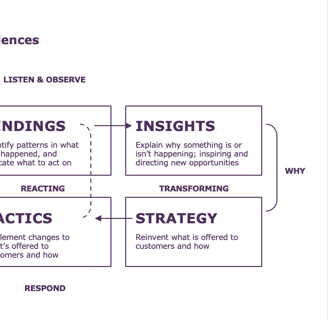


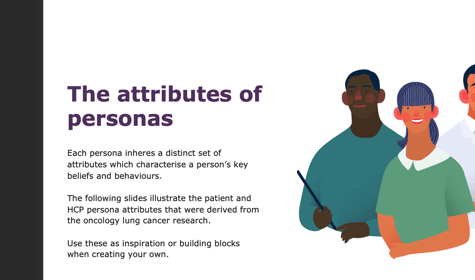

We used a structured research pipeline that moved from facts and findings to insights, and then into strategy. This helped the team see how evidence turned into design direction, supporting buy-in across functions.
Personas – Framing Behavior and Mindsets
To make findings actionable, we translated insights into behavior-based personas. This was key to aligning teams on how different user groups think, act, and decide.
Patients were categorized by mindset and coping behavior (e.g. adaptive, mal-adaptive)
HCPs by their approach to risk, collaboration, and medical decision-making (e.g. caution-first, evidence-first)
This persona structure allowed us to model different engagement flows and build empathy across the product team.
Framing the Language – Shared Terms, Shared Understanding
To work across regions and departments, we created a common vocabulary using familiar and intuitive terms:
Terms like Need, Episode, Phase, Touchpoint, Pain Point, Role helped teams align across UX, business, and IT when building flows and evaluating pain points. We also introduced “How Might We” questions to reframe pain points into solution opportunities—essential for workshop facilitation and design sprints.
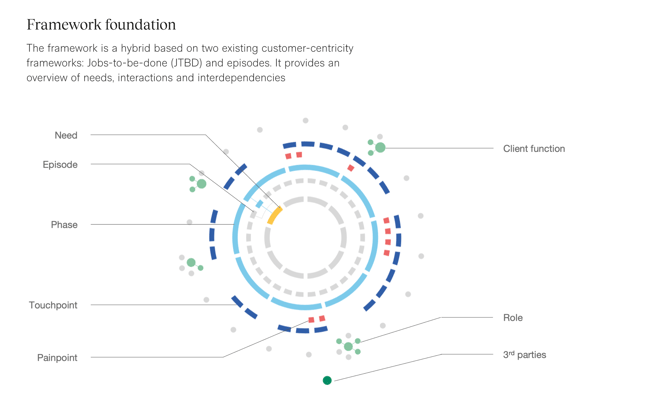

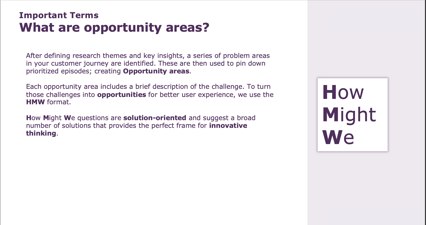

Journey Building – Mapping Engagement at Scale
With a shared language and personas in place, we designed multi-stakeholder customer journeys:
Defined episodes and needs using the JTBD method
Visualized end-to-end journeys with standardized touchpoints
Created modular building blocks for cross-market alignment
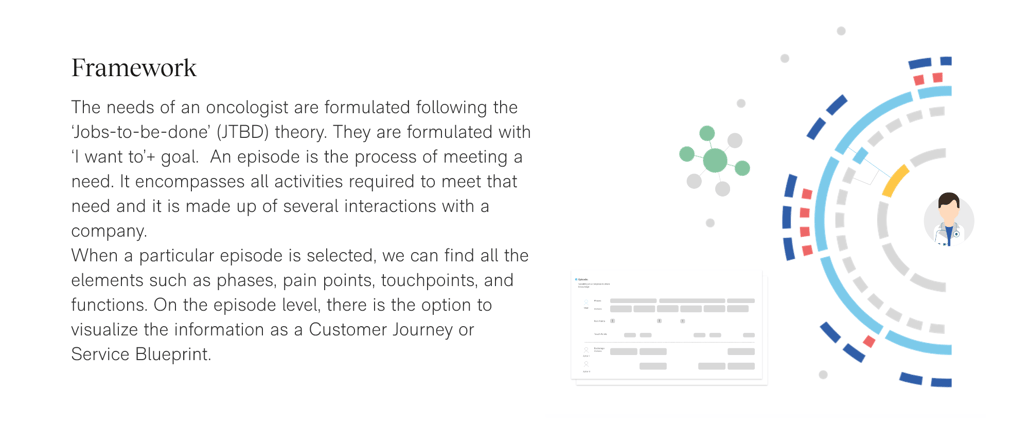

Testing, Prototyping, Iterating
We tested early journey flows and engagement logic to identify friction points and validate assumptions:
Usability – Were the flows intuitive across personas?
Adoption readiness – Did internal teams see how this fit their tools and org models?
Feedback loops – We iterated using real feedback from stakeholders and affiliates
Organizational Rollout & Change Enablement
Once validated, we prepared a scalable rollout approach that included:
Coaching and onboarding of internal teams
Integration into CX and digital initiatives
Feedback collection and improvement loops
The framework was designed not just for one market, but to support global scale-up and local adaptation.
Project Outcomes
Scalable Engagement Model – Used by multiple teams to guide stakeholder interaction
Data-Backed Insights – Feeding future roadmaps, digital tools, and content strategies
Clarity Across Functions – Shared terms, aligned personas, and unified direction
Improved Digital Experience – Built on real needs and validated behaviors
This project wasn’t just about delivery—it was about creating the foundations for long-term transformation, through shared language, deep insights, and collaborative design.